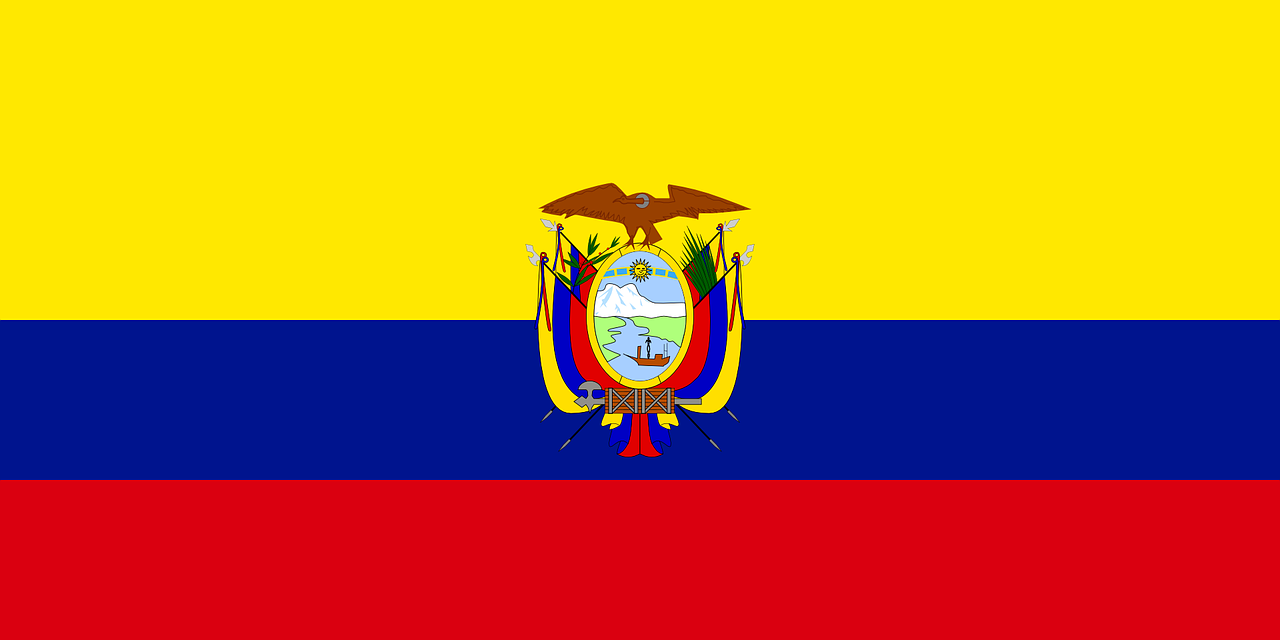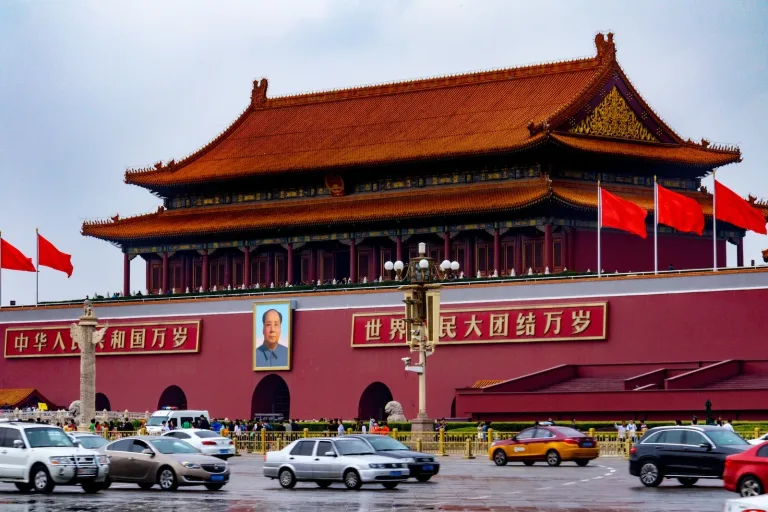26 Fun Facts About Ecuador | High Life in the Clouds
1. Ecuador is the closest country to space.
Ecuador is uniquely positioned almost right on the equator, which makes its mountain, Mount Chimborazo, the closest point on Earth to space due to the planet’s bulge at the equator.
Despite Mount Everest being the highest mountain above sea level, Chimborazo’s peak is farther from the center of the Earth, making this one of the most fascinating Ecuador facts for anyone interested in geography or astronomy.
2. The country is named after the equator.
Ecuador is one of the few countries in the world named after a geographical feature. The equator, which divides the globe into the northern and southern hemispheres, runs right through the country, offering a unique tourist experience of standing in both hemispheres simultaneously.
This distinctive feature provides a literal and figurative central point for understanding Ecuador’s cultural and environmental diversity, making it a favorite among educational Ecuador facts.
3. Ecuador recognizes the rights of nature.
In a pioneering environmental move, Ecuador became the first country to recognize the rights of nature in its constitution. This legal acknowledgment allows for the protection of ecosystems and natural processes, emphasizing the country’s commitment to environmental preservation.
This groundbreaking approach not only sets a global precedent but also reflects the deep ecological awareness and respect prevalent in Ecuadorian society, underscoring important and inspiring fun facts about Ecuador.
4. The Galápagos Islands are part of Ecuador.
The Galápagos Islands, known worldwide for their unique and diverse wildlife, are an integral part of Ecuador. This archipelago inspired Charles Darwin’s theory of natural selection and continues to be a living laboratory for scientific research.
Visitors to these islands can experience close encounters with species that are not found anywhere else on earth, making it a captivating highlight of Ecuador facts for wildlife enthusiasts and researchers alike.
5. Ecuador is a major exporter of bananas.
Ecuador is the world’s largest exporter of bananas, accounting for about one-third of all bananas exported globally. This agricultural prowess plays a crucial role in the country’s economy and provides employment to thousands of Ecuadorians.
This fact not only highlights Ecuador’s agricultural importance but also its impact on global food markets, showcasing an economic perspective.
6. Quito was the first city declared a UNESCO World Heritage Site.
In 1978, Quito, the capital of Ecuador, was among the first cities to be designated as a UNESCO World Heritage Site. This recognition was due to its well-preserved historical center, which boasts an impressive array of colonial architecture.
The city’s rich history and stunning architectural heritage make it a must-visit for history buffs and culture enthusiasts.
7. Ecuador is home to over 16 million people.
With a population exceeding 16 million, Ecuador boasts a diverse mix of ethnic groups, including indigenous peoples, mestizos, Afro-Ecuadorians, and others. This cultural diversity is reflected in the country’s rich traditions, cuisine, and festivals.
Understanding the demographic makeup is essential for anyone looking to explore or study the social dynamics and cultural facts about Ecuador.
8. Ecuador uses the U.S. dollar as its official currency.

In a move to stabilize its economy, Ecuador adopted the U.S. dollar as its official currency in 2000. This transition has facilitated trade and tourism, making it easier for American tourists to travel and spend within the country.
This economic fact about Ecuador is crucial for travelers and economists alike, offering a glimpse into the country’s strategic decisions in global economics.
9. Ecuador has the first constitution to recognize the rights of ecosystems.
Reaffirming its commitment to environmental conservation, Ecuador’s constitution was the world’s first to recognize the rights of ecosystems to exist and flourish. This innovative legal framework has inspired similar initiatives in other countries.
This aspect of Ecuadorian law not only highlights its pioneering environmental policies but also serves as a significant educational point.
10. Over 25 different languages are spoken in Ecuador.
While Spanish is the official language, Ecuador is linguistically diverse with over 25 recognized languages. This includes several indigenous languages such as Quechua, Shuar, and others, which are spoken by various ethnic groups throughout the country.
This linguistic variety enriches Ecuador’s cultural tapestry and provides fascinating insights into its social and cultural complexities for those interested in Ecuador facts.
11. Ecuador is one of the world’s most biodiverse countries.
Ecuador might be small in size, but it packs an enormous ecological punch. It is considered one of the most biodiverse countries in the world, hosting a vast array of flora and fauna across its Amazon rainforest, Andean highlands, and the Galápagos Islands.
This ecological richness makes it a prime spot for nature lovers and researchers, emphasizing its global environmental significance among fun facts about Ecuador.
12. The traditional hat known as a “Panama hat” is actually from Ecuador.
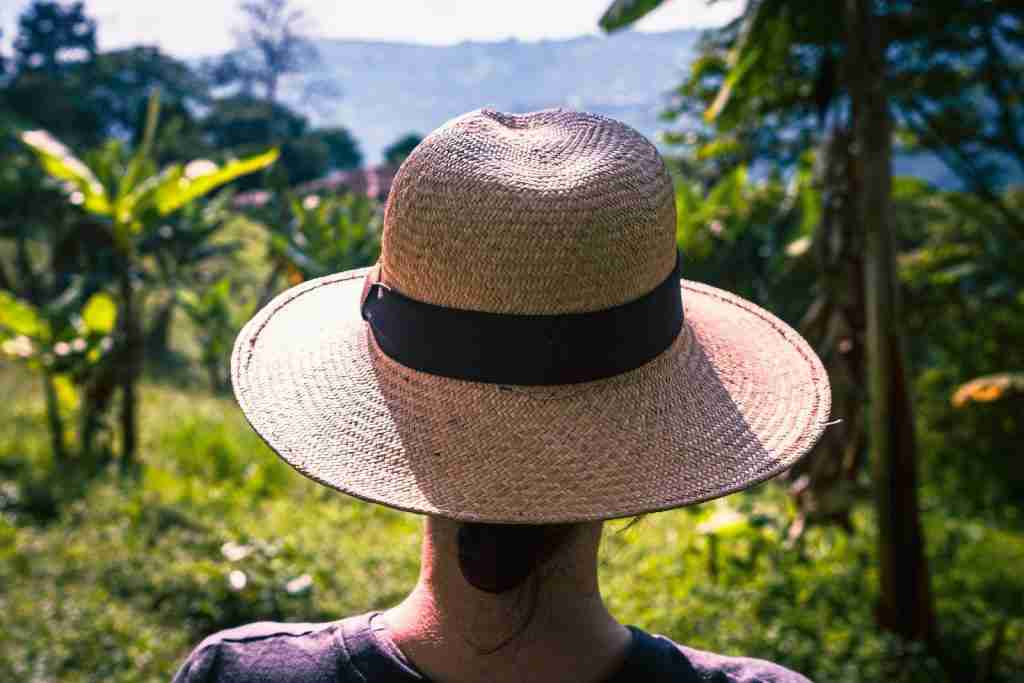
Contrary to popular belief, the iconic Panama hat originates from Ecuador. These hats were traditionally made from the plaited leaves of the toquilla straw plant, a technique perfected by Ecuadorian craftsmen.
This misnomer is a quirky yet historically significant fact, shedding light on Ecuador’s artisanal skills and their impact on global fashion trends.
13. Ecuador’s constitution grants rights to Pachamama (Mother Earth).
Reflecting ancient Andean beliefs, Ecuador’s constitution uniquely recognizes Pachamama, or Mother Earth, as having rights to be respected and maintained. This constitutional recognition integrates indigenous cosmologies with modern legal frameworks, setting a precedent for environmental and cultural respect.
This integration of traditional beliefs with contemporary policies not only enriches the cultural fabric but also positions Ecuador at the forefront of global environmental discussions, making it an intriguing point among Ecuador facts.
14. Ecuador is one of only two countries in South America that do not share a border with Brazil.
Ecuador and Chile are the only South American countries not bordering Brazil. Ecuador’s location between Peru and Colombia gives it a unique geographical identity independent of the largest country in South America. This separation contributes to its distinct ecological and cultural heritage.
This fact emphasizes Ecuador’s unique geographical positioning and its implications for biodiversity and cultural development, making it a noteworthy addition to any list of amazing facts about Ecuador.
15. The official language of Ecuador is Spanish, but Kichwa and Shuar are also widely spoken.
While Spanish is the dominant language, Ecuador’s linguistic landscape includes several indigenous languages, with Kichwa and Shuar among the most prominent. These languages are integral to the cultural identity and heritage of Ecuador’s indigenous communities.
The preservation and practice of these languages are supported by cultural policies, highlighting Ecuador’s commitment to cultural diversity, which is an essential part of understanding the nation’s social fabric.
16. Ecuador’s Tungurahua volcano is one of the most active in the world.
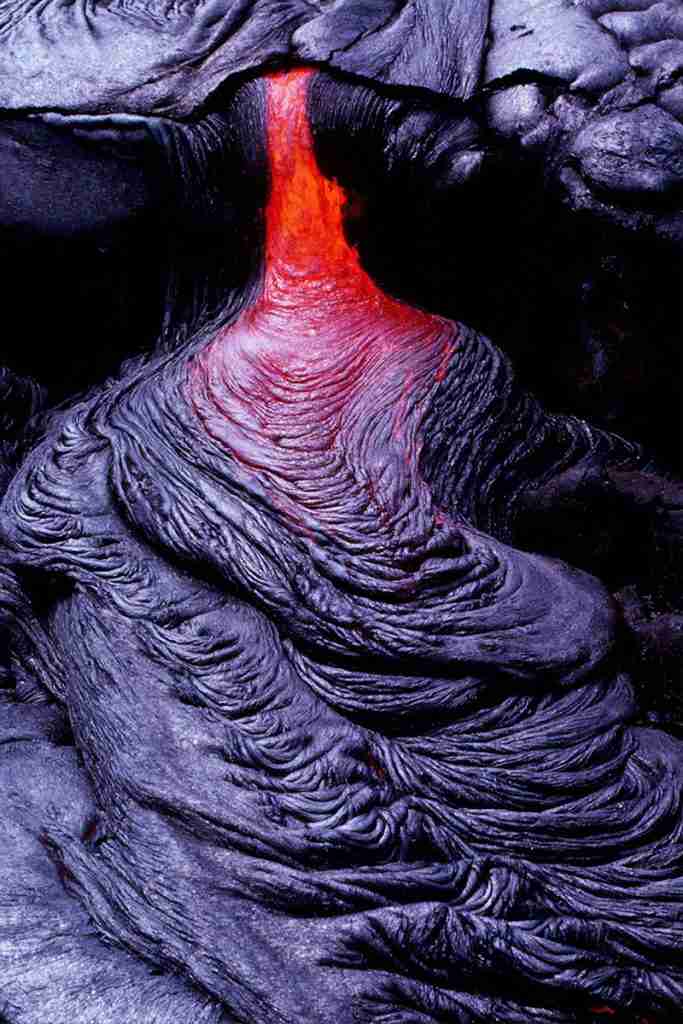
Tungurahua, aptly named “The Black Giant,” is one of the most active and closely monitored volcanoes in Ecuador. Its frequent eruptions have been a source of both awe and concern for the local populations.
Volcanic activity is a significant part of Ecuador’s natural landscape, shaping much of its topography and offering a dramatic glimpse into the earth’s geothermal power, which is central to many amazing facts about Ecuador.
17. Ecuador was the first country to grant legal rights to wild animals.
In a landmark legal decision, Ecuador set a global precedent by granting legal rights to wild animals, ensuring their right to exist, thrive, and evolve in their natural habitats. This legal framework reflects a profound respect for biodiversity and ecological balance.
This pioneering approach not only protects the wildlife but also highlights Ecuador’s innovative contributions to global environmental law, making it a pioneering highlight in discussions about ecological conservation.
18. The national tree of Ecuador is the cinchona tree, which produces quinine—an essential ingredient in malaria treatment.
The cinchona tree, known for its bark from which quinine is extracted, is celebrated as Ecuador’s national tree. Quinine has been used for centuries to treat malaria, showcasing Ecuador’s natural contributions to global health solutions.
This fact connects Ecuador’s biodiversity with its impact on global healthcare, underscoring the country’s role in medicinal plant research and its application in fighting diseases like malaria.
19. Ecuador’s Cotopaxi volcano is among the highest active volcanoes in the world.
Rising majestically above the Andean mountains, Cotopaxi is not only one of the highest active volcanoes globally but also one of the most symmetrical volcanic cones. Its nearly perfect conical shape makes it a popular subject for photographers and scientists alike.
The ongoing volcanic activity provides valuable data for geological studies and attracts thrill-seekers and tourists, making it a pivotal aspect of Ecuador’s natural wonders.
20. The Yasuni National Park in Ecuador is one of the most biodiverse places on earth.
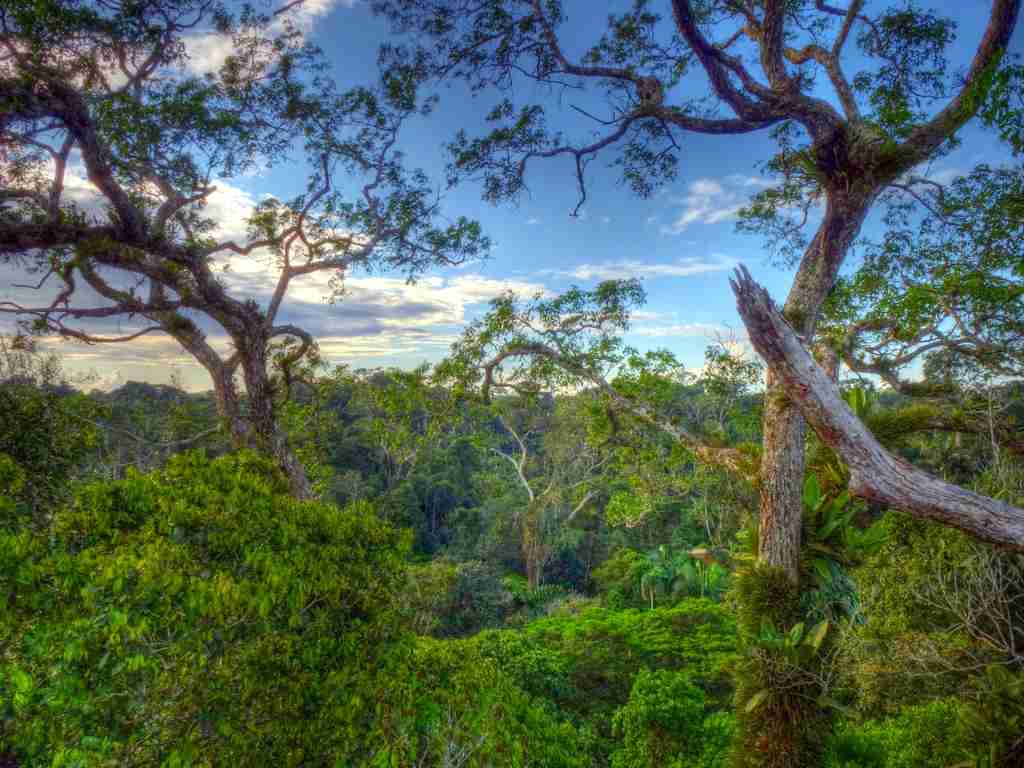
Yasuni National Park is a hotspot of biodiversity, home to countless species of flora and fauna, many of which are endemic. Its vast rainforests are critical for ecological research and conservation efforts.
This park is not only a natural treasure but also a vital resource for scientists and conservationists aiming to understand and protect the Earth’s biodiversity.
21. Ecuador is a leading exporter of cacao, the primary ingredient in chocolate.
Ecuador is renowned for its high-quality cacao, which is sought after worldwide for its rich flavor profile, making it a key player in the global chocolate market. The country’s diverse climates support the growth of different cacao varieties, each with unique characteristics.
This agricultural success story highlights Ecuador’s role in the culinary world, especially in the production of premium chocolates.
22. The Andean condor is considered the national bird of Ecuador.
The majestic Andean condor, symbolizing strength and freedom, is revered in Ecuador and is part of the national coat of arms. This bird is one of the largest flying birds in the world by wingspan.
Efforts to conserve the Andean condor are crucial for maintaining biodiversity and cultural heritage, reflecting the deep connections between Ecuador’s wildlife and its national identity.
23. Ecuador was the first country in the world to recognize the right of nature to regenerate.
Ecuador’s groundbreaking legal system uniquely recognizes the rights of nature, including its capacity to regenerate and sustain cycles vital for life. This legal innovation underscores a philosophical and practical commitment to sustainability and ecological respect.
This fact not only showcases Ecuador’s environmental leadership but also serves as a model for other nations in how to legislate environmental protection and sustainability.
24. The traditional dish of Ecuador is ceviche, made with locally sourced seafood.

Ecuador’s version of ceviche, a popular seafood dish, is renowned for its unique preparation using fresh local ingredients, including shrimp, lime, and plantain. It reflects the rich culinary traditions and coastal influences of the country.
This dish is a staple in Ecuadorian cuisine and offers a taste of the local flavor, making it a delightful point of interest for food enthusiasts exploring Ecuador.
25. Guayaquil is the largest city in Ecuador.
Guayaquil, the bustling port city, serves as the economic and commercial heart of Ecuador. It is the largest city in terms of population and area, and plays a critical role in the nation’s economy due to its strategic coastal location.
This city’s dynamic culture and economy make it a focal point for understanding urban development in Ecuador, offering insights into its modernization and challenges.
26. Traditional Ecuadorian music features a blend of indigenous, African, and Spanish influences.
Ecuador’s music scene is a vibrant tapestry of cultural influences, reflecting its diverse ethnic background. Traditional music often incorporates instruments like the pan flute and marimba, playing a significant role in cultural celebrations and daily life.
This cultural fusion is essential for understanding the social harmony and historical layers of Ecuadorian society, enriching the narrative of amazing facts about Ecuador.
FAQs
Ecuador is located on the northwestern coast of South America, bordered by Colombia to the north and Peru to the east and south. It also has a coastline along the Pacific Ocean to the west.
Ecuador is in the Ecuador Time Zone (ECT), which is 5 hours behind Coordinated Universal Time (UTC-5).
The current time in Ecuador can vary depending on the time of year and location within the country. However, generally speaking, Ecuador follows the time zone UTC-5.
The capital of Ecuador is Quito, which is located in the Andes Mountains in the northern part of the country. Quito is known for its well-preserved colonial center and its position as one of the highest capital cities in the world.
The flag of Ecuador consists of three horizontal stripes of yellow, blue, and red, with the yellow stripe on top, blue in the middle, and red on the bottom. In the center of the flag, there is the Ecuadorian coat of arms featuring an Andean condor holding a shield, a river, a sun rising over mountains, and the national flag.

